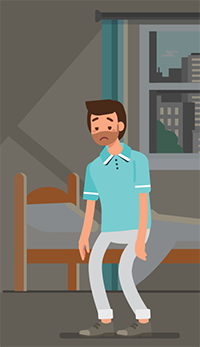 Alzheimer’s disease, the most common form of dementia, is a serious brain disorder that currently affects more than 15 million Americans. Chemical and structural changes in the brain slowly destroy the patient’s ability to create, remember, reason, learn, and relate to others. Although caring for an Alzheimer’s patient at home is challenging, it can be made easier by utilizing ClearCare Online’s homecare software and homecare system.
Alzheimer’s disease, the most common form of dementia, is a serious brain disorder that currently affects more than 15 million Americans. Chemical and structural changes in the brain slowly destroy the patient’s ability to create, remember, reason, learn, and relate to others. Although caring for an Alzheimer’s patient at home is challenging, it can be made easier by utilizing ClearCare Online’s homecare software and homecare system.
Caring for an Alzheimer’s patient involves specialized services that differ from other aspects of home care. In general, patients with Alzheimer’s need more specific, structuralized care by qualified caregivers who have been adequately trained in Alzheimer’s care. Capable caregivers that use ClearCare Online’s reliable homecare system have a distinct advantage when it comes to managing Alzheimer’s behaviors. ClearCare Online’s homecare software is an excellent resource for Alzheimer’s care and for learning how to make the home more Alzheimer’s-friendly. Here are five practical ways homes can be customized for Alzheimer’s home care.
- Limit choices to reduce frustration. A person with Alzheimer’s reacts with aggression or frustration when simple tasks become difficult. Reduce these instances by offering fewer choices. This applies to the wardrobe, refrigerator, cabinets – anywhere the senior might need to make a decision.
- Keep décor and lighting simple. Overstimulation is a trigger for aggressive behavior. Bright, artificial lights or complicated wallpaper can confuse or irritate the patient. Keeping the home uncluttered and organized is also important in order to create a comfortable and safe environment.
- Install handrails in the bathroom. Non-skid decals on the tub’s bottom may also be helpful, as well as non-slip rugs. Caregivers that use ClearCare Online’s homecare software can refer to their patient’s assessments to determine what level of assistance is needed in the bathroom.
- Restrict access to “danger zones.” Install gates or locks on doors that lead to basements, garages, or patios. Areas that may contain hazardous items or have potential for injury should be kept off-limits. Caregivers can make note in their homecare system which patients are a fall risk.
- Make the bedroom safe. Lower the bed height by removing box springs to reduce the risk of falling – especially for patients who tend to wander. Keep a flashlight on the nightstand, or use several nightlights. It’s also recommended to place a cane or walker by the bed if the patient is unbalanced when rising.
ClearCare Online’s homecare system and homecare software are invaluable tools when it comes to Alzheimer’s care. Caregivers will receive reminders through their homecare software for administering medication and preparing meals. A dependable homecare system is also essential for monitoring Alzheimer’s patients as their disease progresses – as well as keeping family members and physicians well informed. Do you care for a loved one who suffers from Alzheimer’s? Check out our blog post on Caregiver Burnout for tips on keeping yourself healthy.









